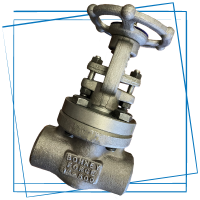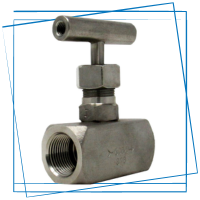
WHAT ARE VALVES?
Pipe valves control, restrict, or stop the flow of liquid or gas through a piping system. Valves also regulate the flow, which prevents flooding and allows repairs. Valves are considered a type of pipe fitting because of their ability to connect two pieces of pipe. These types of valves in Piping increase the performance of every piping system, making them a worthy investment.
WORDS TO KNOW:
Valve: a mechanical device used to control the flow of fluid through a pipe.
Closure Member: the part of the valve, positioned in the flow stream, to permit or obstruct the flow depending on it's position.
Seat: the part of the valve against which the closure member presses to effect shut-off.
Stem: the valve part to which motion is applied outside the valve to move the enclosure member inside the valve.
Body: the pressure containing shell of he valve that has ends adapted for connecting to the piping.
Bonnet: the pressure containing shell of the valve which usually contains an opening for the stem.
Packing: a deformable material which provides a seal around the stem.
Gate Valve: A gate valve is used to control the flow of fluids such as liquids or gases in a pipeline. It is designed with a gate or wedge-shaped disc that slides back and forth within the valve body to control the flow of the fluid. When the gate is in the fully open position, the fluid flows through the valve with minimal resistance, and when the gate is fully closed, the flow is completely blocked. Gate valves are commonly used in applications where a full flow or no flow of fluid is required, such as in the water supply, oil and gas, chemical, and power generation industries. They are also preferred in applications where a tight shut-off is required.
Ball Valve: A ball valve is a type of valve that uses a hollow, perforated ball to control the flow of fluid through a pipeline. The ball has a hole or port in the center that allows the fluid to pass through when the valve is open. When the valve is closed, the ball is rotated so that the hole is perpendicular to the flow path, blocking the flow of fluid. Ball valves are commonly used in applications where a full flow or no flow of fluid is required, and where quick and easy operation is important. They are often preferred over gate valves in applications where the valve will be frequently operated, as they require less force to operate and are less likely to become stuck or jammed.
Butterfly Valve: A butterfly valve is designed with a disc or plate that is mounted on a central shaft, which rotates to control the flow of fluid. The disc is positioned parallel to the flow when the valve is fully open, and perpendicular to the flow when the valve is fully closed. Butterfly valves are often preferred over other types of valves in applications where space is limited, as they require less space to operate than other valves. Butterfly valves are also known for their low-pressure drop and high flow capacity, making them ideal for large-diameter pipelines.
Globe Valve: Globe valves are designed with a movable disk or plug, which is positioned perpendicular to the flow when the valve is fully closed, and parallel to the flow when the valve is fully open. The disk or plug is typically attached to a stem that can be raised or lowered to control the flow of fluid. Globe valves are often used in applications where precise control of flow rate or pressure is required, such as in the oil and gas, chemical, and pharmaceutical industries. They are also used in applications where a tight shut-off is required, or where the fluid contains suspended solids or other contaminants that can cause other types of valves to become stuck or jammed.
Needle Valve: Needle valves are a type of valve that is used to control the flow of fluid in a pipeline with high precision. They are designed with a slender, pointed needle-shaped plunger that is attached to a stem. The stem is threaded, and by turning it, the position of the needle can be adjusted to control the flow of fluid through the valve. Needle valves are often used in applications where a precise flow control is required, such as in instrumentation systems, laboratories, and high-pressure hydraulic or pneumatic systems. They are also commonly used in applications where a leak-tight seal is required, as the needle-shaped plunger can be used to provide a precise, finely controlled flow even at low flow rates.
Check Valve: A check valve, also known as a non-return valve or one-way valve, is a type of valve that is used to allow the flow of fluid in one direction only. It is designed with a movable disk or flapper that opens when the fluid flows in the desired direction and closes when the fluid flows in the opposite direction. This prevents backflow or reverse flow of fluid, which could cause damage to equipment or contamination of the fluid. Check valves are commonly used in applications where a backflow or reverse flow of fluid must be prevented, such as in pump systems, water treatment plants, and steam systems. They are also used in applications where a rapid and automatic shut-off is required, such as in firefighting systems.
TYPES OF MATERIALS:
|
|
TYPES OF CONNECTIONS:
LIST OF BRANDS:
VALVE SPECIFICATIONS AND STANDARDS:
ANSI (American National Standards Institute): provides standardizations of codes and standards developed by other organizations which apply to design, dimensions, construction, testing and application of the valves, fittings and piping.
API (American Petroleum Institute): specifications for valves and fittings, used in the production, transportation and processing of liquid and gaseous hydrocarbon material.
ASME (American Society of Mechanical Engineers): codes for construction of pressure vessels and related items including valves and fittings.
ASTM (American Society for Testing and Materials): materials specifications and materials acceptance test criteria used in the manufacturing of valves and fittings.
MSS (Manufacturers Standardization Society of the Valve and Fitting Industry): standard practices for dimensions, marking, terminology, quality, testing and other information for manufacturers and users of the products of the valve and fitting industry.






